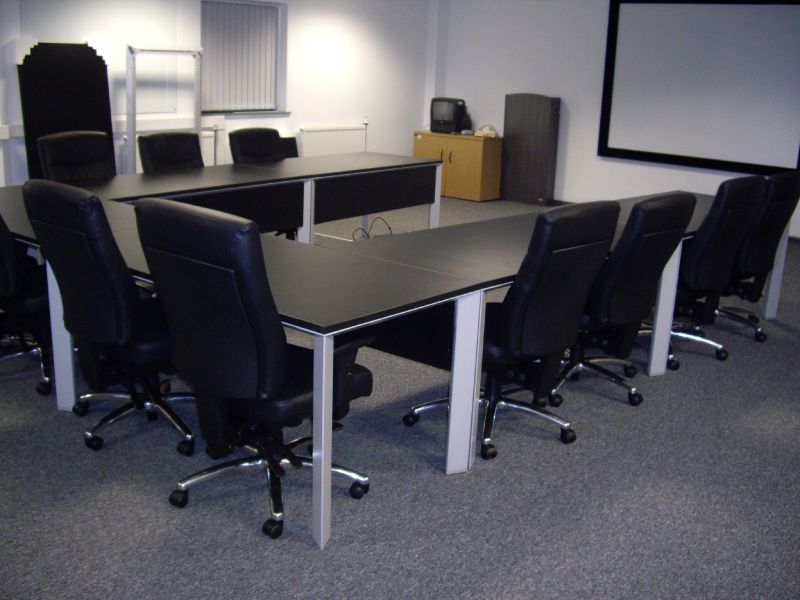Transforming IT rooms

IT rooms can be transformed into exciting and productive learning areas by careful design. Here are some ideas and considerations in designing an IT Room to meet the needs of IT education today:
Classroom Design
In many educational environments, IT rooms have tended to stick to the typical classroom design. The classic classroom layout of a grid of tables and chairs facing a teacher is quite workable where teaching is being delivered in a lecture situation and whole class presentations to the students. The teacher can survey the entire class and pick up nonverbal cues from the students to identify learning issues with individual students or groups within the class as a lesson is proceeding. The disadvantage of this type of layout is that it does not allow for peer-assistance, collaboration or ease of movement for the teacher to assist. Ease of equipment maintenance by technicians can be an issue.
Four-leaf Clover IT Room
This design arranges the computers in five-leaf clover desking across an IT room, with screens separating into five individual desks within the clover pattern. This offers a maximum amount of privacy, not allowing the students to disturb one another and making it very useful for exam environments. The disadvantage of this layout is the fact it is not ideal when presentations are made to a whole class. Further, the privacy afforded by the design can also be a disadvantage as students may find it easier to surf inappropriate sites and not pay attention during class presentations.
U-shaped IT Room
The U-shaped layout where the desking is arranged facing the teacher has the class presentation benefits of the classic classroom design as discussed above, but has the added benefit of far easier and prompter access for the teacher to assist individual students or a group of students. Another major advantage is the ease of access for technicians for maintenance, cable management etc. without having to disturb the students. However, the layout has some disadvantages: it is not useful in exam or test situations and doesn’t allow teachers to monitor easily what the students are doing on their machines. Also, this layout may take up more space than the other layouts.
Inverted U-shape IT Room

This type of layout is similar to U-shaped layout but inverted, with students facing outwards rather than inwards. Swivel chairs are then used so that students can turn round and face the teacher during class presentations. This type of layout allows the teacher to see all the students’ computer screens for oversight. There is complete ease of access for the teacher to assist individuals or groups of students. There is a minimum of dead space to the design which can be very useful where space is at a premium.
There is no ‘one design suits all’ layout for a computer room, but the right design can yield great results in the success of IT studies at your school.
At Springfield, you can draw on 40 years of experience supported by a comprehensive design and planning service to create a truly great learning environment for you and your students. For advice, recommendations and a free no-obligation quote, give us a call on 0117 972 9320.



